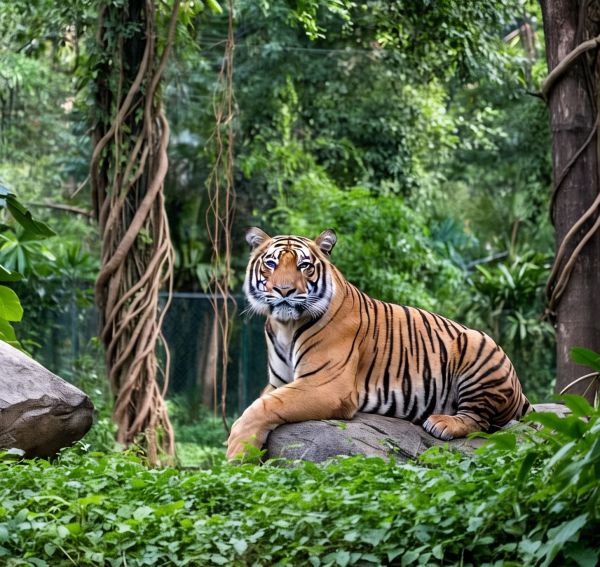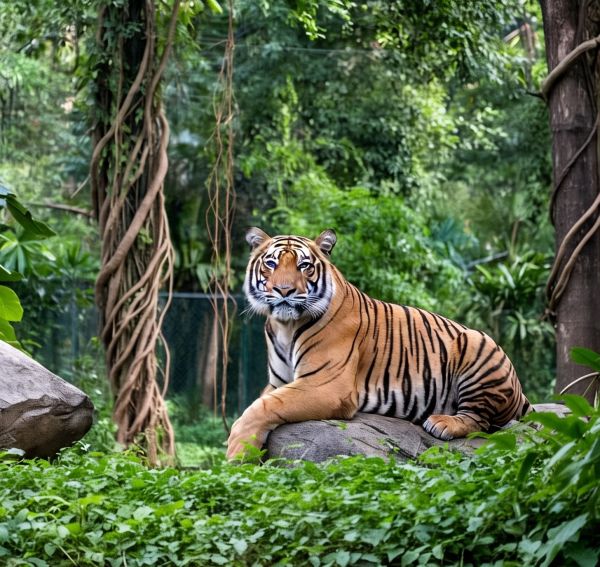Saturday, June 28, 2025

Travelers from around the world who were hoping to explore India’s renowned tiger territories will need to adjust their plans this monsoon season. Starting July 1, the core zones of several prominent tiger reserves in the Vidarbha region will no longer be accessible to tourists. This routine yet impactful seasonal restriction will affect not only wildlife lovers but also international travelers who organize trips specifically for tiger sightings and jungle safaris.
These closures, rooted in long-standing wildlife conservation efforts, are not unexpected but remain a significant consideration for those planning travel between July and October. Tourists will now have to look to the buffer zones, which will remain partially open, although with limited availability and offline booking only.
The Seasonal Conservation Directive
In accordance with directives from the National Tiger Conservation Authority (NTCA), tourism in the core zones of Pench Tiger Reserve (PTR), Bor Tiger Reserve (BTR), Umred-Paoni-Karhandla Wildlife Sanctuary (UPKWS), and the ever-popular Tadoba-Andhari Tiger Reserve will be halted from July 1 until further notice.
This annual closure takes place during the monsoon, a vital time for wildlife breeding, especially for tigers. Authorities have underscored the necessity of minimizing human presence during this phase to allow the animals to move freely, breed naturally, and maintain their ecosystem balance.
“This is a crucial time for wildlife,” officials emphasized. The monsoon is when natural behaviors like mating, denning, and raising offspring occur undisturbed. This period, therefore, demands complete isolation from tourism in these core forest regions.
These core zones are routinely shut down between July 1 and October 30 each year, although some buffer zones may open depending on conditions and forest department approvals.
Spotlight on Tadoba and Maya the Tigress
Of all the reserves impacted, Tadoba-Andhari Tiger Reserve in Chandrapur draws the most attention. Known for offering some of the most consistent tiger sightings in India, it remains a top choice for both domestic and foreign wildlife enthusiasts.
One of its most iconic residents, Maya the tigress, is frequently seen across various zones of the forest. Her presence has made her a beloved subject for wildlife photographers over the years. With the core zones closed and Maya less visible during this period, it’s expected that photography-focused tourists may postpone or cancel trips.
In the last financial year alone, over 200,000 tourists visited Tadoba, illustrating how central it is to ecotourism in the region. The temporary halt on safaris could lead to a notable dip in tourism revenue, affecting local guides, hospitality workers, and others who rely on the travel industry for income.
Buffer Zone Access: A Partial Relief
Though the core safari areas are closing, not all avenues for wildlife interaction are shutting down. Buffer zones in the same reserves will still be accessible, though under strict regulation. These zones provide a glimmer of opportunity for nature enthusiasts to stay connected to the forest, even if the experience is more limited.
However, access will be granted only through offline bookings, and availability will be restricted. This limits visitor flow but maintains a level of engagement for those who still want to witness India’s wilderness during the monsoon.
In the case of Navegaon-Nagzira Tiger Reserve (NNTR), whether or not the core zone closes will depend on the arrival of the monsoon rains. If significant rainfall occurs around July 1, then closure is likely to be enforced here as well. This uncertainty adds another layer of complexity for travelers trying to lock in their plans.
Conservation with Tourist Cooperation
The Forest Department has strongly appealed to the public for cooperation during these sensitive months. Tourists are being asked to respect the needs of wildlife and understand that these temporary restrictions serve a much larger ecological purpose.
Such seasonal closures are not merely bureaucratic protocols; they are deeply tied to preserving biodiversity and ensuring sustainable tourism. Allowing wildlife to breed undisturbed means healthier populations, which benefits everyone—including future travelers hoping to witness these majestic animals in the wild.
These patterns are not just about short-term closures; they are about long-term gains for both wildlife conservation and eco-tourism sustainability.
Reopening Ahead: October and Beyond
Looking ahead, the core zones of all mentioned reserves—including Pench, Bor, UPKWS, Tadoba, and possibly NNTR—are expected to reopen on October 1, when the breeding season ends and the monsoon retreats.
Tourists aiming to experience the full richness of the jungle can plan visits after this date, when the landscape is lush, animal activity is vibrant, and safari operations are back to full swing. However, visitors and travel organizers should continue to factor in these seasonal closures when crafting itineraries for wildlife destinations in India.
These well-coordinated efforts between forest authorities, tour operators, and responsible tourists showcase a growing understanding of how to balance human curiosity with ecological necessity. The months ahead may be quieter in the jungles of Vidarbha, but they will also be crucial in ensuring these forests stay wild for generations to come.
«Enjoyed this post? Never miss out on future posts by following us»



